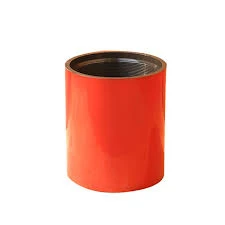- Afrikaans
- Albanian
- Amharic
- Arabic
- Armenian
- Azerbaijani
- Basque
- Belarusian
- Bengali
- Bosnian
- Bulgarian
- Catalan
- Cebuano
- Corsican
- Croatian
- Czech
- Danish
- Dutch
- English
- Esperanto
- Estonian
- Finnish
- French
- Frisian
- Galician
- Georgian
- German
- Greek
- Gujarati
- Haitian Creole
- hausa
- hawaiian
- Hebrew
- Hindi
- Miao
- Hungarian
- Icelandic
- igbo
- Indonesian
- irish
- Italian
- Japanese
- Javanese
- Kannada
- kazakh
- Khmer
- Rwandese
- Korean
- Kurdish
- Kyrgyz
- Lao
- Latin
- Latvian
- Lithuanian
- Luxembourgish
- Macedonian
- Malgashi
- Malay
- Malayalam
- Maltese
- Maori
- Marathi
- Mongolian
- Myanmar
- Nepali
- Norwegian
- Norwegian
- Occitan
- Pashto
- Persian
- Polish
- Portuguese
- Punjabi
- Romanian
- Russian
- Samoan
- Scottish Gaelic
- Serbian
- Sesotho
- Shona
- Sindhi
- Sinhala
- Slovak
- Slovenian
- Somali
- Spanish
- Sundanese
- Swahili
- Swedish
- Tagalog
- Tajik
- Tamil
- Tatar
- Telugu
- Thai
- Turkish
- Turkmen
- Ukrainian
- Urdu
- Uighur
- Uzbek
- Vietnamese
- Welsh
- Bantu
- Yiddish
- Yoruba
- Zulu
special clearance connection mechanism for enhanced performance and safety
Special Clearance Coupling Enhancing Efficiency in Mechanical Systems
In the realm of mechanical engineering and systems design, the quest for efficiency and functionality drives innovations in componentry and assembly. One particularly noteworthy advancement in this domain is the development of special clearance couplings. This article explores the concept of special clearance couplings, their applications, benefits, and potential future developments.
What is a Special Clearance Coupling?
A special clearance coupling is a mechanical component designed to connect two shafts or other moving parts while allowing for a specific amount of clearance. This clearance is crucial as it enables the system to accommodate misalignments, thermal expansions, and fluctuating operational conditions without compromising performance. Unlike traditional couplings, which can be rigid and restrictive, special clearance couplings are engineered to offer more flexibility while ensuring power transmission efficiency.
Applications in Industry
Special clearance couplings find widespread use in various industries due to their adaptability and resilience. In manufacturing settings, for instance, they are instrumental in connecting motors to conveyors. They allow for minor misalignments which can occur during installation or as machinery wears over time. This flexibility helps maintain operational continuity, reducing the likelihood of equipment failure and downtime.
In automotive engineering, special clearance couplings are vital in powertrains. They facilitate smoother operation by accommodating engine vibrations and alignment shifts, leading to enhanced performance and longevity of the vehicle’s drivetrain system. Similarly, in the aerospace sector, where precision is paramount, these couplings are employed in turbines and other high-precision applications to maintain efficiency and safety.
Advantages of Special Clearance Couplings
1. Enhanced Flexibility The primary advantage of special clearance couplings is their ability to provide operational flexibility. This characteristic allows for the accommodation of misalignments and thermal expansions, which are common in mechanical systems.
special clearance coupling

2. Increased Durability By reducing the stress placed on connected components, these couplings minimize wear and tear. This increased durability translates to prolonged service life and reduced maintenance costs.
3. Smoother Operations Couplings designed with clearance tend to facilitate smoother power transmission, reducing vibrations and noise levels. This is particularly beneficial in applications where noise reduction is paramount, such as in residential or office settings.
4. Cost-Effectiveness While the initial cost of integrating special clearance couplings may be higher than traditional options, the long-term savings associated with reduced maintenance and downtime make them a cost-effective choice in the long run.
Future Developments
As technology advances, the design and functionality of special clearance couplings are expected to evolve. Innovations in materials science may lead to the development of lightweight yet robust coupling materials, enhancing performance while reducing the overall weight of systems. Additionally, the integration of smart technologies, such as IoT sensors, could provide real-time monitoring capabilities. This would allow operators to predict maintenance needs and prevent failures before they occur, further optimizing system performance.
Moreover, with the increasing emphasis on sustainability, future iterations of special clearance couplings may focus on eco-friendly materials and production processes. This shift not only caters to environmental concerns but also aligns with industry regulations that prioritize sustainability.
Conclusion
Special clearance couplings represent a significant advancement in mechanical engineering, providing adaptable and efficient solutions for various industrial applications. Their ability to accommodate misalignments, reduce wear, and promote smoother operations makes them an invaluable component in modern mechanical systems. As industries continue to evolve and prioritize efficiency, durability, and sustainability, the role of special clearance couplings will undoubtedly grow, paving the way for more innovative designs and improved operational protocols. Engaging with this technology today can prepare businesses for the future, enhancing not only their systems but also their overall competitiveness in a dynamic market.
-
Tubing Pup Joints: Essential Components for Oil and Gas OperationsNewsJul.10,2025
-
Pup Joints: Essential Components for Reliable Drilling OperationsNewsJul.10,2025
-
Pipe Couplings: Connecting Your World EfficientlyNewsJul.10,2025
-
Mastering Oilfield Operations with Quality Tubing and CasingNewsJul.10,2025
-
High-Quality Casing Couplings for Every NeedNewsJul.10,2025
-
Boost Your Drilling Efficiency with Premium Crossover Tools & Seating NipplesNewsJul.10,2025







